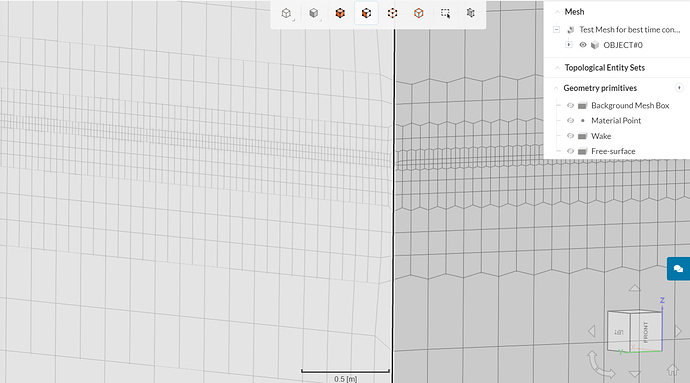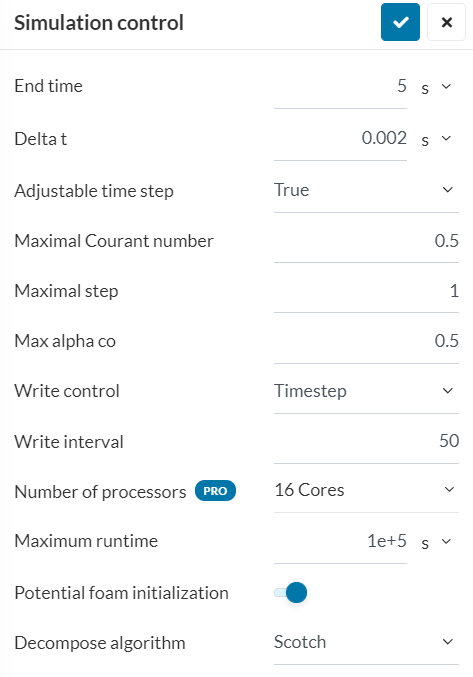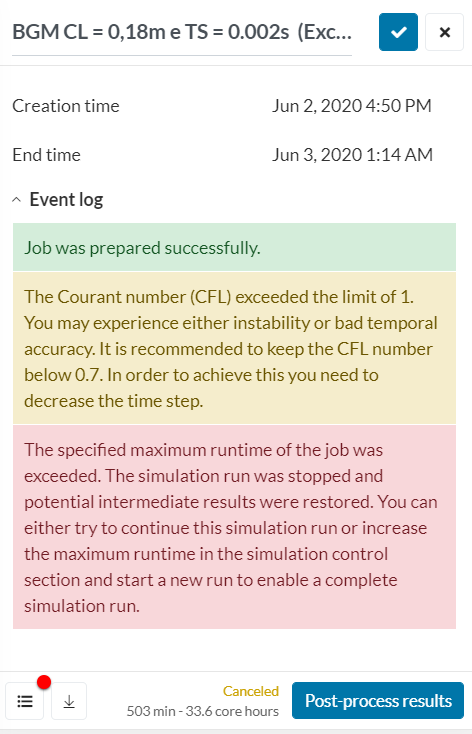Hello everyone,
I have been working on a project that I need to predict the resistance of a boat (total) and split it into those componentes (fricciotal, viscous pressure and wave making). I have done a monophase simulation with just the part under water for one velocity (I am woking on others Froude numbers) but there I couldn’t get the wave pattern and the wave resistance directly (I had to do an approximation), which is my goal doing the simulation with the multiphase solver that capture the free-surface with the VOF method.
Just a picture of the domain to let you know what I am talking about, a typical towing tank resistance test to predict the total resistance of a boat in calm water with just advance movement (without others DOF)
If anyone knows another way to predict just the wave resistance with another kind of simulation or method please let me know, but it has to be based on OpenFOAM because of some requirements of my term paper.
I need to do the mesh with the Hex Parametric Dominant generator and I am trying to use the celllength of the background mesh (before with the generator and apply the desired levels) related to the coarser mesh that I used in the monophase simulation , which is 0,18m, but I don’t know if it’s possible because of the requirements related to the de Courant number in transient simulation (which is the case of multiphase one).
One problem that I am facing is in the use of the generator in the multiphase simulation compared to the incompressible one (that I am calling monophase) because the user has to import the domain from a CAD program with the inlet face splitted, so that he/she can assign the boundary conditions, that in my case is for air and water. The problem is that when I do the mesh, specially with coarsers one, distortions like this happens (I don’t know if it affects the solution and I would like a feedback too if possible).
So, I have tried to coarser the mesh and I am testing some values of timestep using the maxCo as 0,5 with the adjustable timestep on, using the LTS (local time stepping) method to improve the velocity to a steady state case, because I want to know the velocity and pressure distribution to compute the resistance and see the development of the wave pattern in this situation.
But I couldn’t understand so much why some values diverge or even get a Co number above the specified value of 0,5, and that’s why I am here, trying to get some help from you guys. One example of the setup and the message error is presented below:
I am using this project as a start point Wake Development behind a Boat if anyone would like to see to understand what I am trying to do here.
In a first moment I just want to achieve the convergence and accuracy for the geometry presented in my project (whick is from a sistematic serie of ships called Serie 60 with the experimental data of the resistance available for the validation step) for one velocity of advance of 0,99 m/s, using the k-omega SST model as a turbulance model, dispite the others observations related to the simulation here.
The results of the components of the total resistances, related to “viscous force in x direction” and “pressure force in x direction” that are presented as an output in the “Force plot” window here in SIMSCALE are, respectively 6,79N and 1,56N (having in mind that this last component have the viscous pressure and wave resistance together, but I already have the viscous pressure value for this velocity).
The project is here SimScale and any further information that anyone needs I will try to provide, as far as this thread goes on. Any help here would be appreciate and feel free to copy the project, but I would like to have the feedback if possible so that I could learn and develop the simulation with you guys, because I am barely new to this kind of problem specifically.




